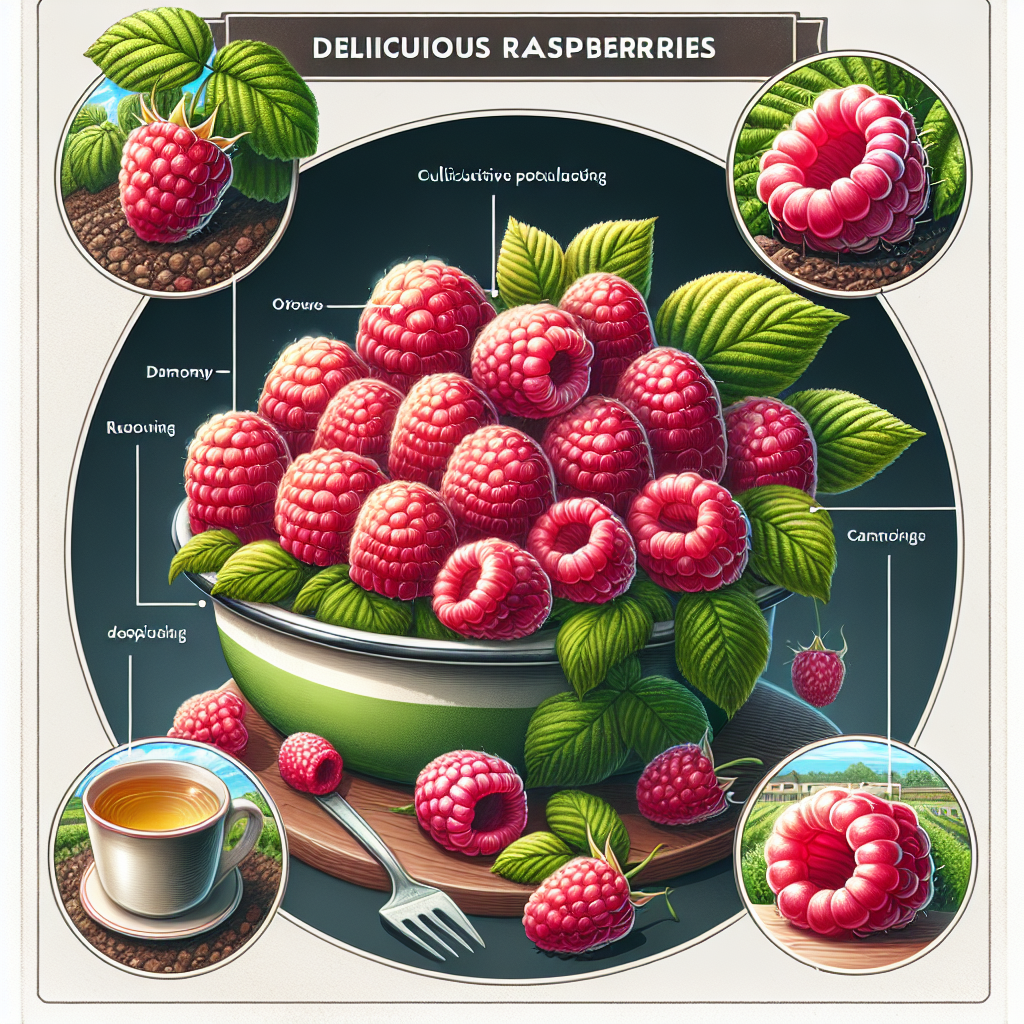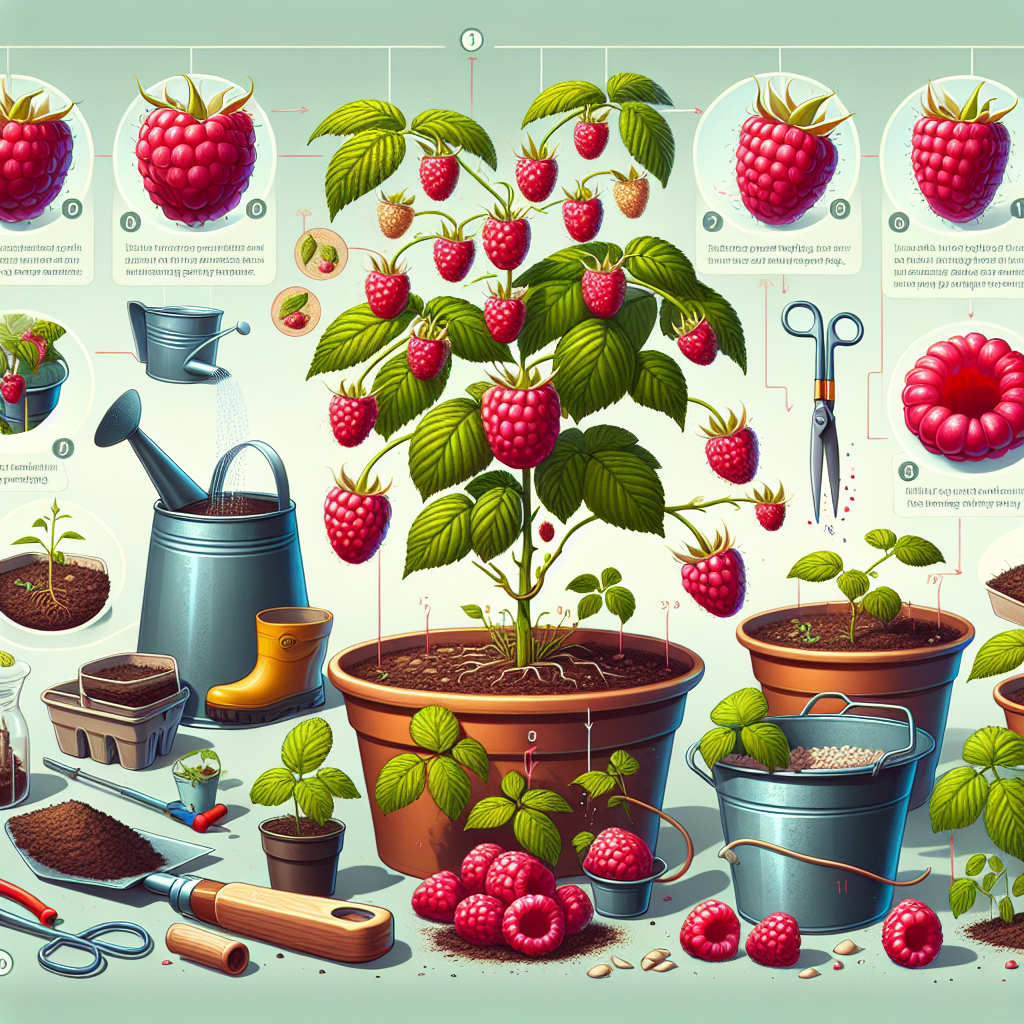A Guide to Growing Delicious Raspberries at Home
Raspberries are a popular fruit known for their sweet and tangy flavor. They are not only delicious but also packed with nutrients, making them a fantastic addition to any home garden. Whether you’re an experienced gardener or just starting out, growing raspberries at home can be a rewarding and enjoyable experience. This comprehensive guide will walk you through the necessary steps to successfully cultivate your own delicious raspberries.
1. Choosing the Right Raspberry Variety
The first step in growing raspberries at home is selecting the right variety for your region and preferences. There are two main types of raspberries: summer-bearing and everbearing. Summer-bearing varieties produce fruit once a year in early summer, while everbearing varieties produce two crops each season – one in early summer and another in late summer or fall. Consider factors such as climate, available space, and desired harvesting schedule when choosing your raspberry variety.
2. Preparing the Soil
Before planting raspberries, it’s crucial to prepare the soil properly. Raspberries thrive in well-draining soil with a pH level between 5.5 and 6.5. Start by removing any weeds or grass from the planting area and loosen the soil with a garden fork or tiller. Add organic matter like compost or well-rotted manure to improve soil fertility and drainage.
3. Planting Raspberries
Once the soil is prepared, it’s time to plant your raspberry bushes. Dig a hole that is wide enough to accommodate the plant’s root system without bending or crowding the roots. Place the plant in the hole, making sure that it sits at ground level without burying any part of the stem or crown.
Space each raspberry plant about 2-3 feet apart, allowing enough room for air circulation between plants and preventing overcrowding as they grow larger over time.
4. Providing Adequate Support
Raspberries are known for their sprawling growth habit, which necessitates providing some form of support. Depending on the variety, you can use trellises, fences, or sturdy stakes to keep the plants upright. As the raspberry canes grow taller, gently tie them to the support structure using soft twine to avoid damaging or breaking them.
5. Watering and Fertilizing
Proper watering is crucial for raspberry plants. Raspberries require about 1-1.5 inches of water per week during the growing season. Deep watering once or twice a week should be sufficient, ensuring that the soil remains moist but not waterlogged.
Fertilizing raspberries is essential for optimal growth and fruit production. Apply a balanced fertilizer in early spring when new shoots emerge, and again after harvest to replenish nutrients in the soil. Incorporating organic matter like compost or aged manure can also help improve soil fertility.

6. Pruning and Training
Pruning raspberries is vital for maintaining plant health and maximizing fruit production. For summer-bearing varieties, prune out old canes immediately after harvest and remove any weak or damaged canes as needed.
For everbearing raspberries, prune all canes to ground level in early spring before new growth begins. This will encourage two crops throughout the growing season.
7. Pest and Disease Control
Raspberries are susceptible to various pests and diseases like aphids, spider mites, root rot, powdery mildew, and raspberry cane borers. Regularly inspect your plants for signs of infestation or disease and take appropriate measures such as applying organic insecticides or fungicides if necessary.
8. Harvesting Raspberries
The most exciting part of growing raspberries is enjoying the fruits of your labor! Raspberries typically ripen over a few weeks, so it’s important to monitor your plants closely during this time.
When raspberries turn fully colored, plump, and easily detach from the plant with a gentle tug, they are ready to be harvested. Be careful not to pull too hard, as ripe raspberries are delicate and can crush easily.
9. Storing and Using Raspberries
Immediately after harvesting, gently rinse raspberries in cool water and allow them to air dry before storing them in the refrigerator. They can stay fresh for up to a week if handled gently and stored properly.
Raspberries are incredibly versatile and can be used in various culinary applications such as pies, jams, sauces, smoothies, or simply enjoyed fresh as a healthy snack.
In conclusion, growing delicious raspberries at home is an achievable goal with the right knowledge and care. By selecting the right variety, preparing the soil correctly, providing adequate support, following proper watering and fertilizing practices, pruning regularly, and addressing pests and diseases promptly – you will be able to enjoy an abundant harvest of delectable raspberries right at your doorstep. Happy gardening!













